Eide Fjordbruk will set the standard for the future of aquaculture
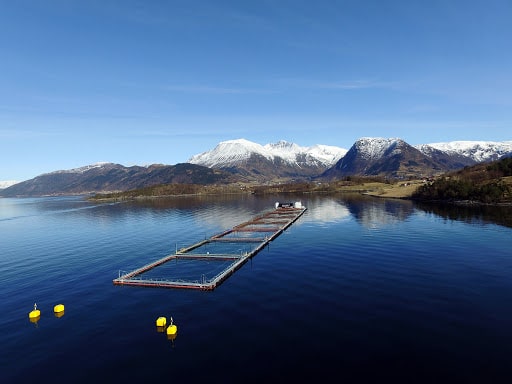
The Eide Folk
All are part of the Eide family. We shall have safe, meaningful jobs, locally in the rural districts. We look out for each other, are considerate and warm towards each other, and we have fun.
In the early 70s Knut Johan Eide served in the military in Bergen with a two-hour commute back and forth, he was always on the lookout for new ways to make a living back on the farm at Eidegrend besides sheep and chicken. He had a small patch of farmland by the water with no agricultural value. Inspired by fish farming pioneer Magne Bolstad both he and fellow landowners put the new «household animal» rainbow trout in the freshwater Skogseidvatnet in Hålandsdalen, sharing what worked, and did not work, like a «cluster» and gaining advantage from natural and fast growth.
Knut Frode Eide like his father also had an eye for development, in 1972 he helped his father carrying fish feed over the bridge to Støo and in 1973 their first fish sales occur. Together with his wife Randi, Knut Frode Eide takes on the endeavor to build up livestock in «open barns» in the sea.
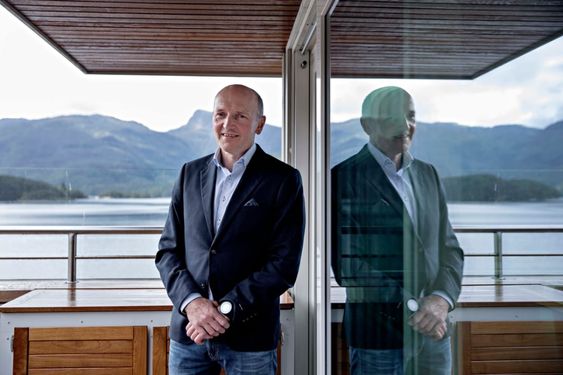
Managing Director Knut Frode Eide is named Person of the Year for the seafood industry in 2017. The winner is named following a vote by the entire seafood industry. The award is given to a candidate who has done well for his/her own business as well as for the broader community. In the awards ceremony, the emphasis is given to the openness in his own business and work, as well as the candidate’s contribution to increasing the reputation of the industry. The jury’s reasoning gives special emphasis to the fact that Knut Frode has always been “ahead of his time”, and that he and his company have created valuable jobs for the local community.
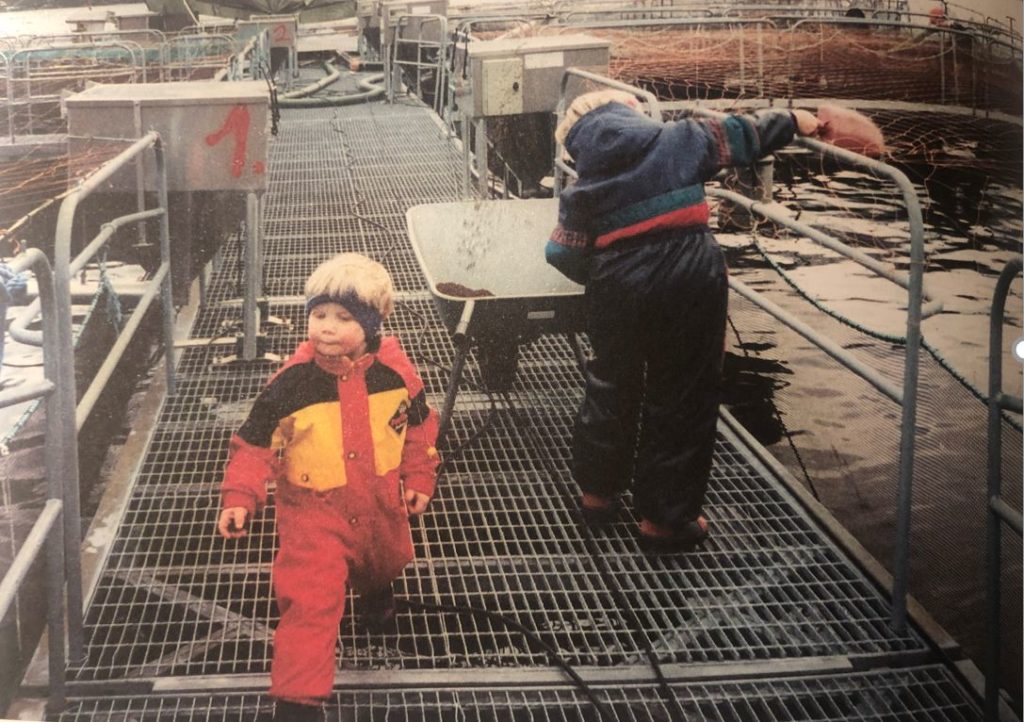
Sondre and Erlend Eide are focused on operations and true to biology, he remembers summer holidays in a camping van to stay close to the fish cages, always on the lookout for the best fish feed. Since 1989 the family business has partnered with Sekkingstad within slaughtering and export sales – delivering to Balik of Switzerland the Worlds most famous and exclusive smoked salmon brand and ensuring fresh salmon delivered in South Korea within only 32 hours after slaughtering.
For 50 years Eide Fjordbruk has been able to seize opportunities in an industry that is still young.
Sondre stresses the importance that the Norwegian Government does not regulate the industry in a way that takes away the comparative advantages, land-based fish farming can be placed anywhere in the world near major markets, and Norway in itself is not strategically placed as it has just a very small home market.
The paper mill is starting to grow, there is a lot of formal requirements, in the early days, the authorities were more supervisors stimulating innovation and not primarily controllers. Most of the value creation is on the west coast and not in Oslo.
New development licenses have been granted from the Government to further technology that addresses the different problems the farmers face; deadly algae, diseases, lice, local emissions, and escapes.
The problem with the development licenses is that they support the most expansive development projects and not the most cost-efficient which fast would benefit all fish farmers. To the community and Norway as a nation identifying where the least effort would make the furthest advantage would better support the whole industry.
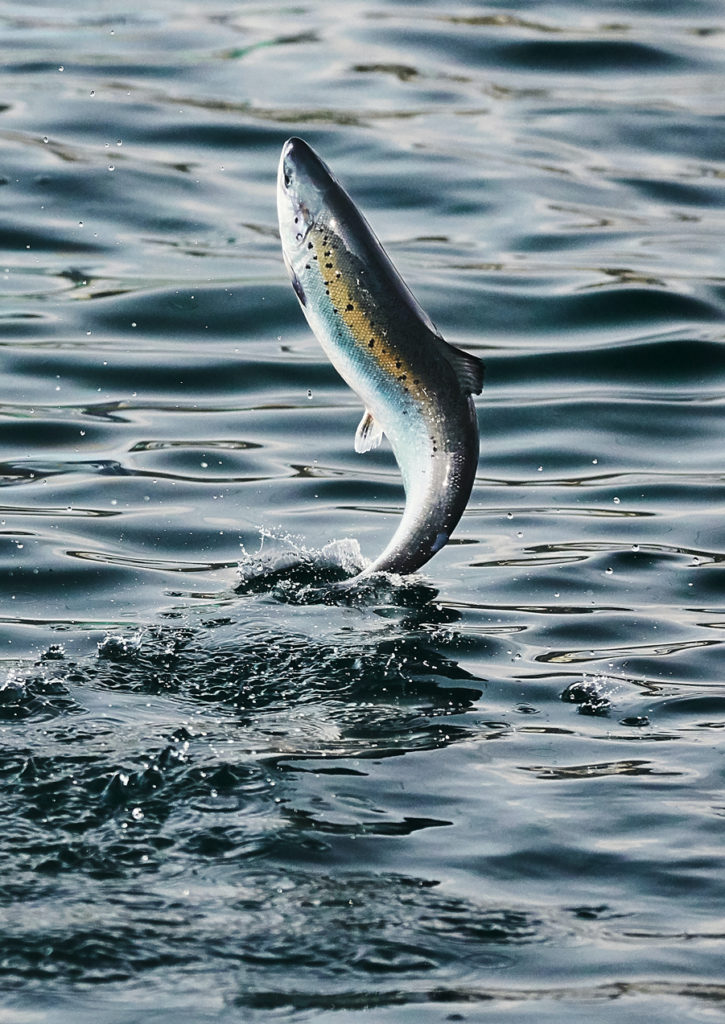
The Fish
We are focused on fish welfare throughout our production cycle, and we do not subject our fish to unnecessary suffering. We shall create a good, healthy product of high-quality fish, in a responsible manner and in line with our values and principles.
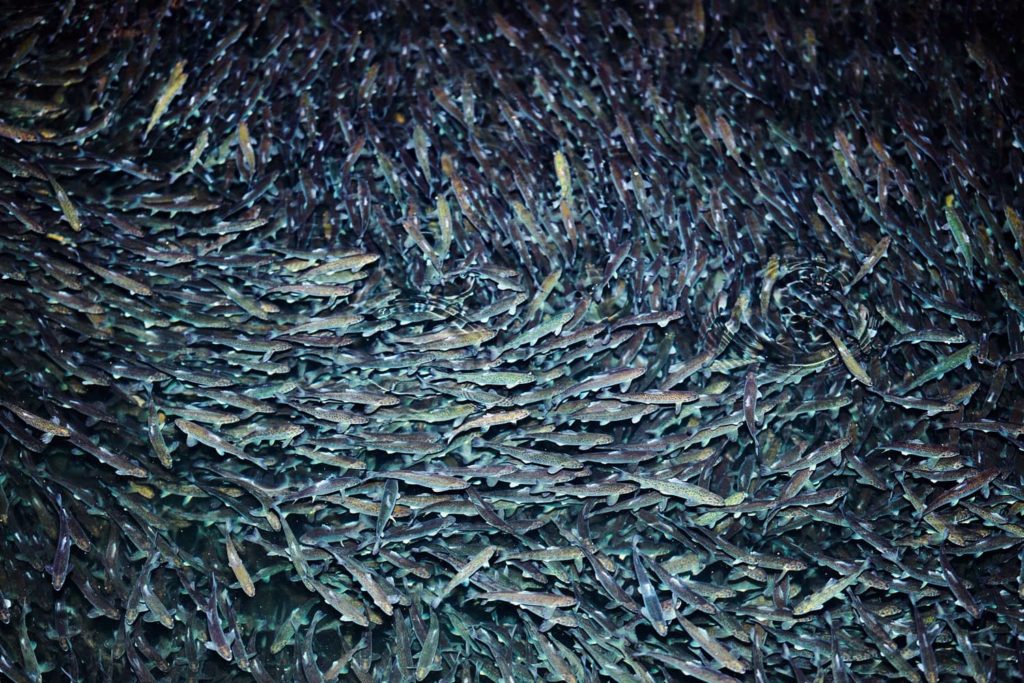
For Eide, a synergy between ownership, responsibility, and operations has always been important, and this is why our business is able to maintain such a strong connection to its product and to the local community in which we are situated.
Our focus is on achieving good long-term results at all stages of business. We want to shape the future of aquaculture in the best possible way, so that future generations can harvest and eat high-quality salmon and trout from Eide. Improving quality is on our agenda every single day. It is all about having highly proficient, locally based staff who are all working towards the same goal: to produce salmon of the utmost quality.
Each year we produce over 60 million salmon meals.
Eide Fjordbruk is a small company with a great vision: we shall set the standard for the future of aquaculture. This is a vision we take very seriously and which requires us to make commitments to sustainable and climate-friendly food production. We are now officially a CarbonNeutral company, certified in accordance with The CarbonNeutralProtocol, the global standard for carbon-neutral programs. To our knowledge, we are the first salmon farming company to achieve this goal.
INFOGRAPHICS SALMON CARBON FOOTPRINT
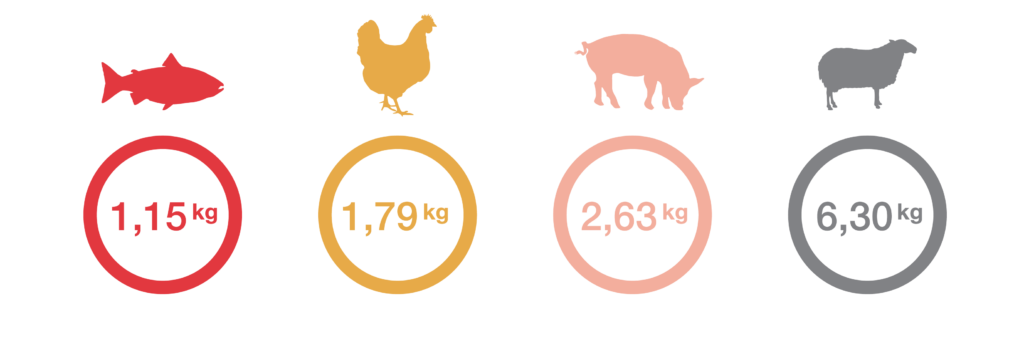
Atlantic salmon is currently the most efficient animal to produce, with the lowest feed conversion ratio (FCR). Typically Atlantic salmon need 1.15 kg feed to gain 1 kg body weight. Pigs need more than twice as much food as the salmon to gain 1 kg, while sheep need to eat almost six times as much.

Harvest yield is the percentage of the animal left after the inedible portion has been removed. Salmon differs from other terrestrial animals with a yield of 86%. Chicken in comparison has a harvest yield of just 47%.
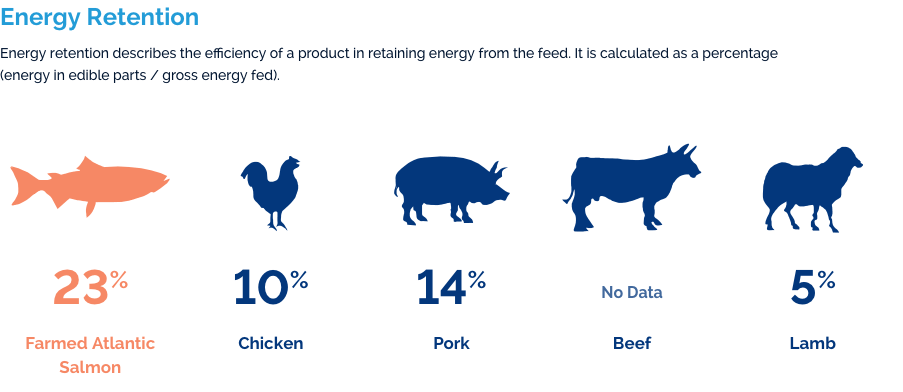
Farmed salmon is one of the most eco-efficient and sustainable forms of protein available. With a low carbon footprint, high protein retention, and efficient feed conversion ratio, farmed salmon can contribute a healthy- and climate-friendly protein source to the world’s food needs.

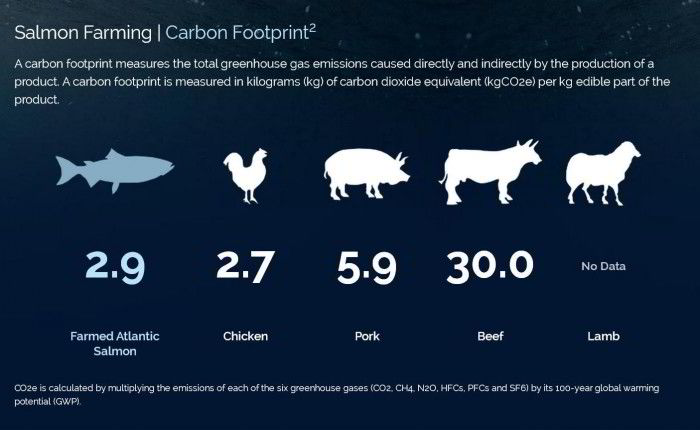
Our journey to becoming carbon neutral started in 2016 when we made a commitment to electrify all our salmon farms, a process that has significantly reduced our Scope 1 emissions.
As we transition from diesel aggregates to land-based power, we will replace direct emissions from diesel consumption (Scope 1) with increased consumption of electrical power, and thereby indirect emission from the production of electrical power (Scope 2). We would like to contribute to the green shift and to a swift transition to clean energy, and we have therefore set ourselves a goal of using locally produced Norwegian hydroelectric power by purchasing origin guarantees from 2020. With this action, we can reduce the carbon footprint of our salmon, as well as contribute to a quicker transition to clean energy and support local hydroelectric power producers in Norway. We decided that we will also electrify our boats.
Since feed is responsible for the vast majority of our carbon footprint, it is also important for us to have targeted efforts to reduce the indirect emissions from feed per kg of the salmon we produce (Scope 3). We have reduced the emissions from feed and feed ingredients by eliminating the use of Brazilian soy from our salmon feed.
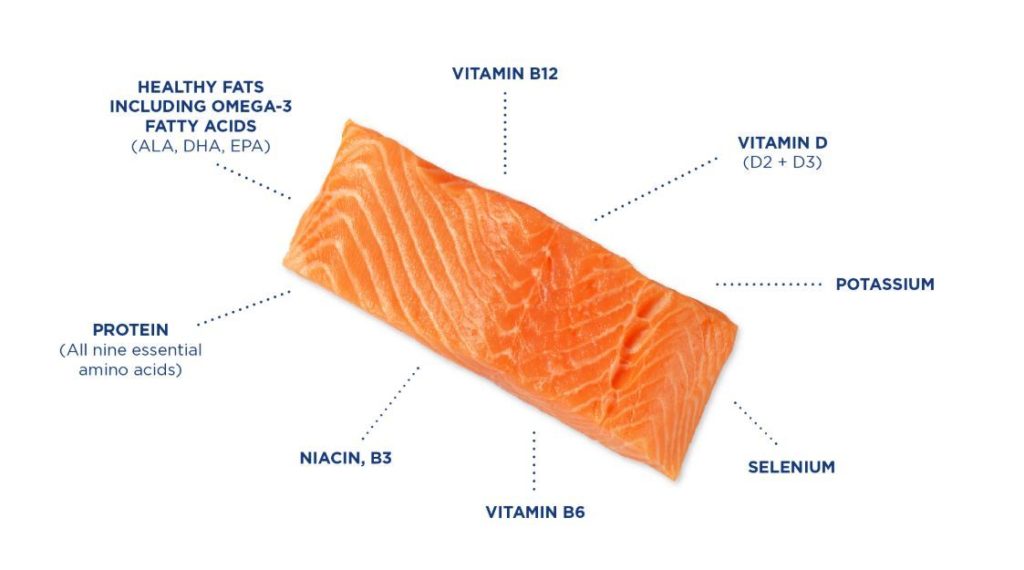
In addition to having requirements and a good dialogue with our feed suppliers, for us, this is primarily about maximizing the amount of high-quality salmon we get out of the feed we use. The most important way to help achieve this is to reduce mortality and the feed conversion rate.
We are trying to achieve this for instance through active use of camera technology to avoid having feed end up outside the nettings, focusing on training and procedures to prevent escape, and a continual effort to ensure good fish health and a mortality rate that is as low as possible. We are working systematically and thoroughly to limit mortality through everything from choice of genetics, vaccines, and feed to reducing the figures for de-licing and improving the actual de-licing operations. The
dead fish are examined and categorised, and the development is tracked closely over time. Incidents that lead to abnormally high mortality are reported to The Norwegian Food Safety Authority. In 2019, we have also invested in equipment for bleeding of fish at the nettings with two standby boats to help us slaughter weak fish which might otherwise have died.
We also prepared our first GHG Accounts based on the GHG Corporate standard in order to reliably track and measure our progress.
Working with third-party climate finance experts, Natural CapitalPartners, Eide Fjordbruk now takes another leap by offsetting our remaining, unavoidable emissions by supporting carbon finance projects which positively impact local communities and nature. All the projects are subject to independent expert review to ensure that the projects meet the highest standards (ICROA approved) and result in verifiable and permanent emission reductions. At the moment we support the following two projects:
Forest protection and clean cookstoves in Malawi: Through the combination of forest protection and the distribution of clean cookstoves, the project is using carbon finance to deliver significant emissions reductions, protect an important area of biodiversity value, and address the health risks of indoor air pollution.
Wetland enhancements and clean energy: This award-winning project has created almost 420 acres of new wetlands, established an environmental education center, and generates electricity from landfill gas (LFG) to power 18,000 homes.
In addition to this, we are going one step further. We believe that the food for the consumer of tomorrow should be carbon neutral. We will therefore also supply carbon-neutral salmon. The CarbonNeutral product will be offered to selected customers. When you buy this salmon we have already offset not only all our own emissions but all carbon emissions in the life cycle of the salmon from eggs to harvested salmon based on the requirements of The CarbonNeutral Protocol. You can read more about the life cycle emissions of our salmon in our GHG Accounts.
In many cases, actions to reduce our carbon footprint have also been profitable for us. The feed is our greatest expense, so a better feed factor and lower mortality rate also have a positive effect on our financial results.
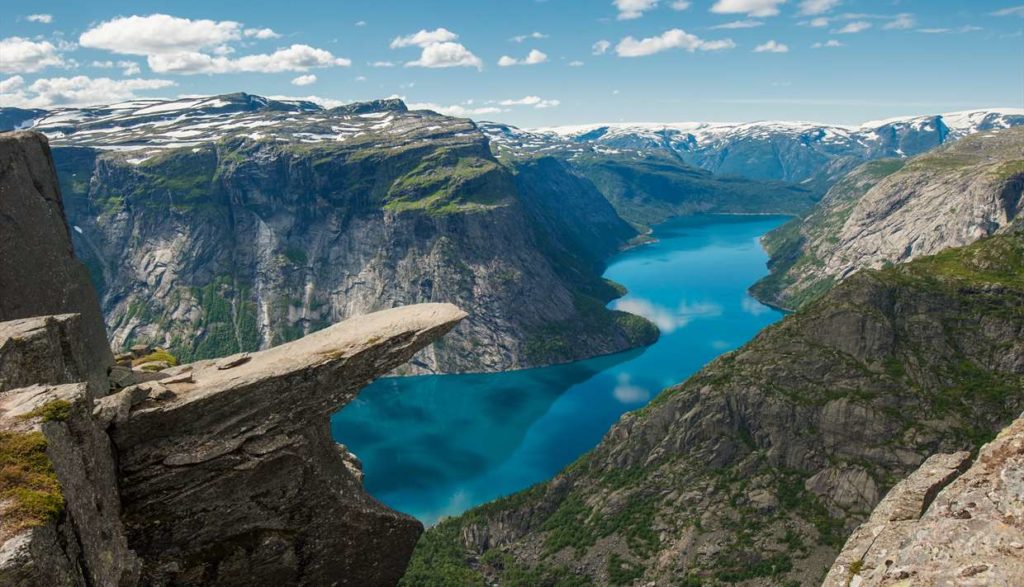
Fjord
We take care of the environment in which we work, and we are always working on improving and developing an even more forward-thinking and sustainable production. We shall also do our part to help achieve the UN’s sustainability goals of clean oceans, reduced greenhouse emissions and responsible production.
Long Western Norwegian fjords, where nutrient-rich streams from the Atlantic Ocean meet fresh Norwegian mountain water—we believe this gives the best growth conditions in the world, for both fish and people. Throughout three generations, this has been the core reason we can deliver quality fish to people all over the world.
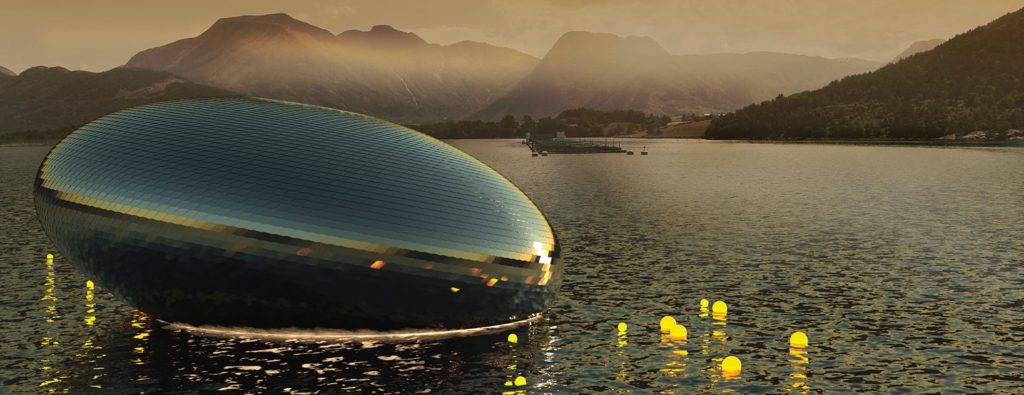
Future
We shall have profitable operations and a long-term perspective in which we carry out profitable investments locally
Towards summer 2021 Eide Fjordbruk will open Salmon Eye a center for learning and discussion about the possibilities for a sustainable way of fish farming. Our aim is to see aquaculture in a new evolutionary way.
With this concept, he wanted to represent the quality brand «Norwegian Salmon» locally, nationally and internationally with a far-sighted perspective. – We are especially proud of the product «Norwegian Salmon», and want to share fact-based knowledge about the salmon in a future-oriented and specially adapted way, Eide said in an interview.
Initially, the application was rejected, but after updating the concept and adjusting the application, the government made a new assessment. On 12 June 2019, we received the positive message that Eide Fjordbruk had the “green light” to go ahead with the spectacular visitor center.
Salmon Eye will be located at Hågardsneset near Rosendal in Western Norway. The purpose of the visitor center is to give an objective presentation of the net footprint for seafood production, including positive and negative footprints. The plans are to open the center in the spring/summer of 2021.
Eide wants to replace myths with facts, strengthen recruitment to the industry and food production at sea, and offer a new attraction in the municipalities around Folgefonna. We are proud of what we do and would like to have the opportunity to convey and show how we produce healthy and nutritious food in the Hardangerfjord.
Nature, hard-working people, and technological innovation have brought us to where we are today, and this is also what will carry us on into the future. We believe in a long-term perspective and the sustainable utility of the region’s fantastic natural resources.
Strong finances are the foundation of any long-term business enterprise. Our financial focus is not on the next quarterly or yearly settlement, but on sustainability for generations. We know that our industry is in international competition and vulnerable to economic fluctuations. Therefore, we keep a cool head, invest in people, business operations, and technology, and consider it a privilege to be part of the greatest local community in the world.
For this reason, we invest heavily in research and innovation. From submersible nettings to big data and artificial intelligence: Innovation has been a pillar in our operations and development from the very beginning. We are proud to be an influential participant in navigating the way ahead for the Norwegian fish farming industry.
Our ambition is to help reach global climate targets. We believe that better utilization of the ocean as a source of food is among the most important measures to that end. This also makes it important to protect the ocean from industries with a large carbon footprint. Our actions range from using fish feed with a low CO2 footprint to land-powered rafts to thermal de-licing, which is drug-free.
Salmon lice keep Maximum Allowable Biomass (MAB) down. We do not hide the fact that there are challenges, especially with lice, but we will solve them, and huge sums will be invested in this work, says Sondre Eide



